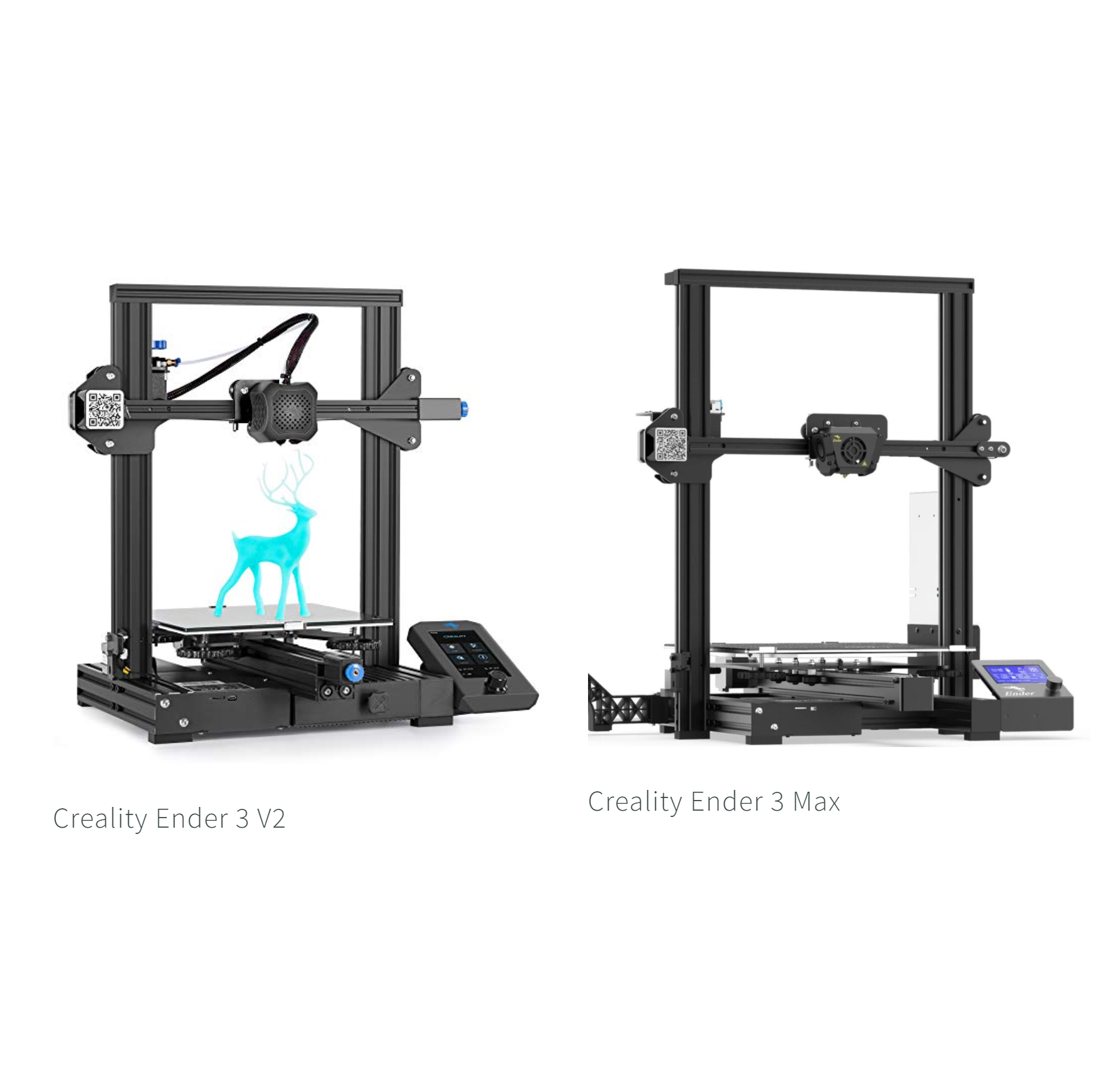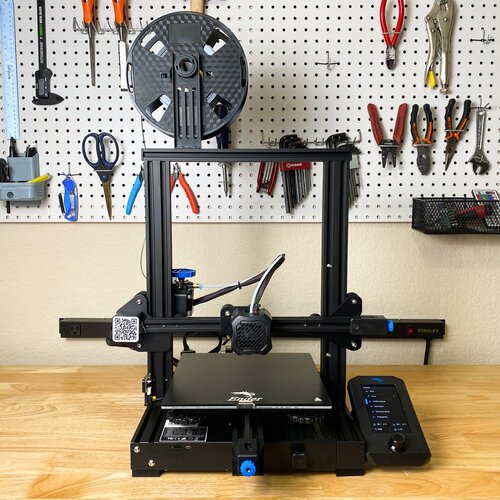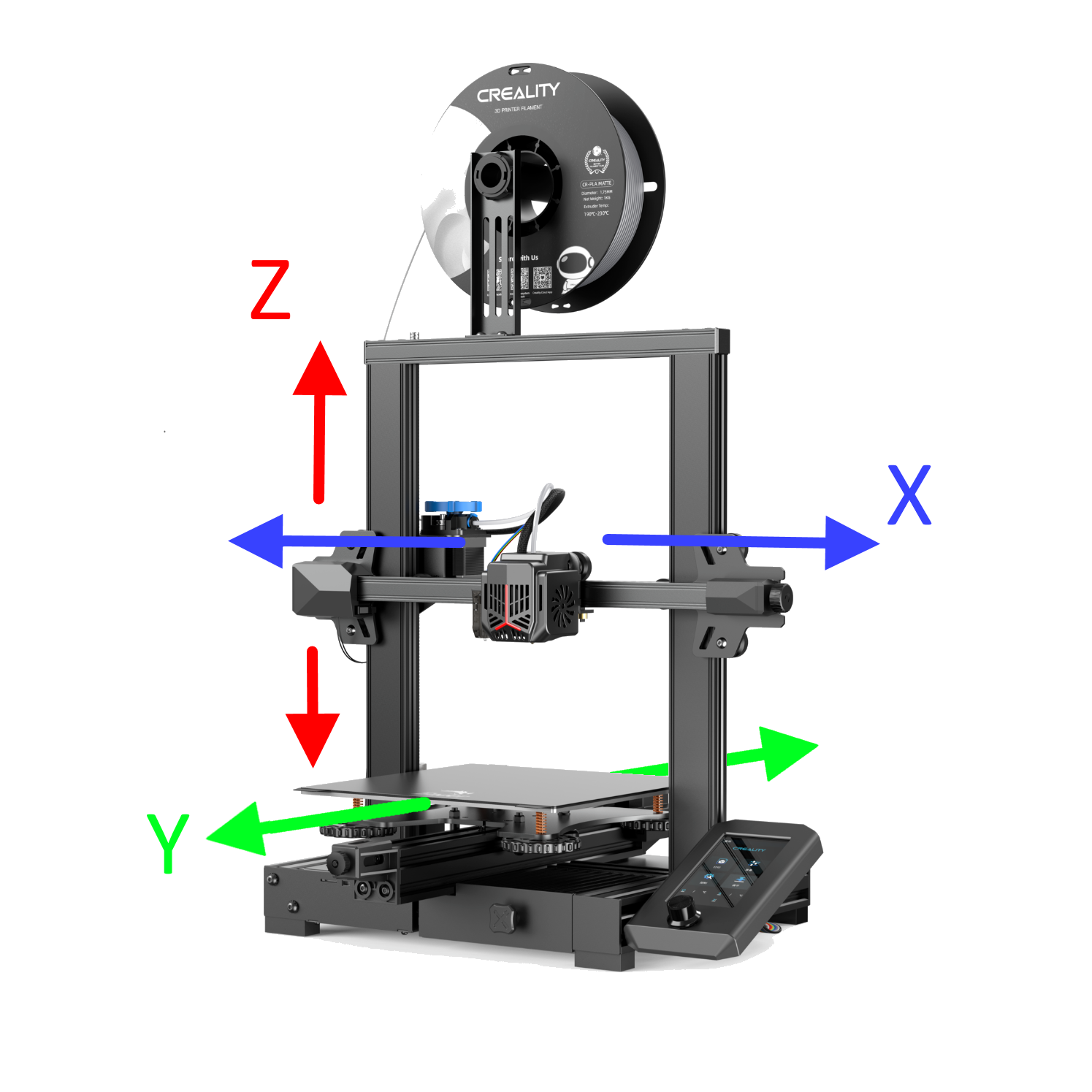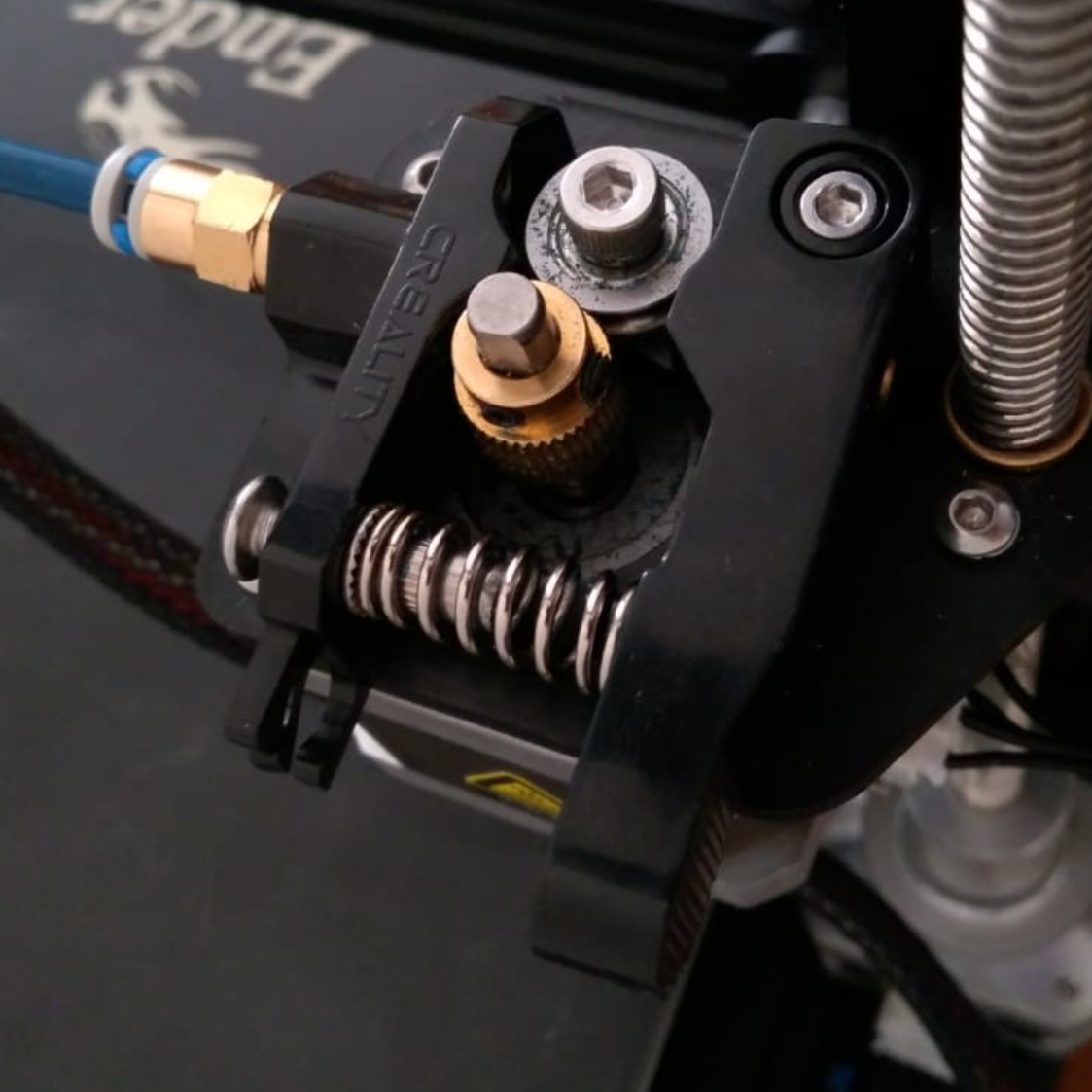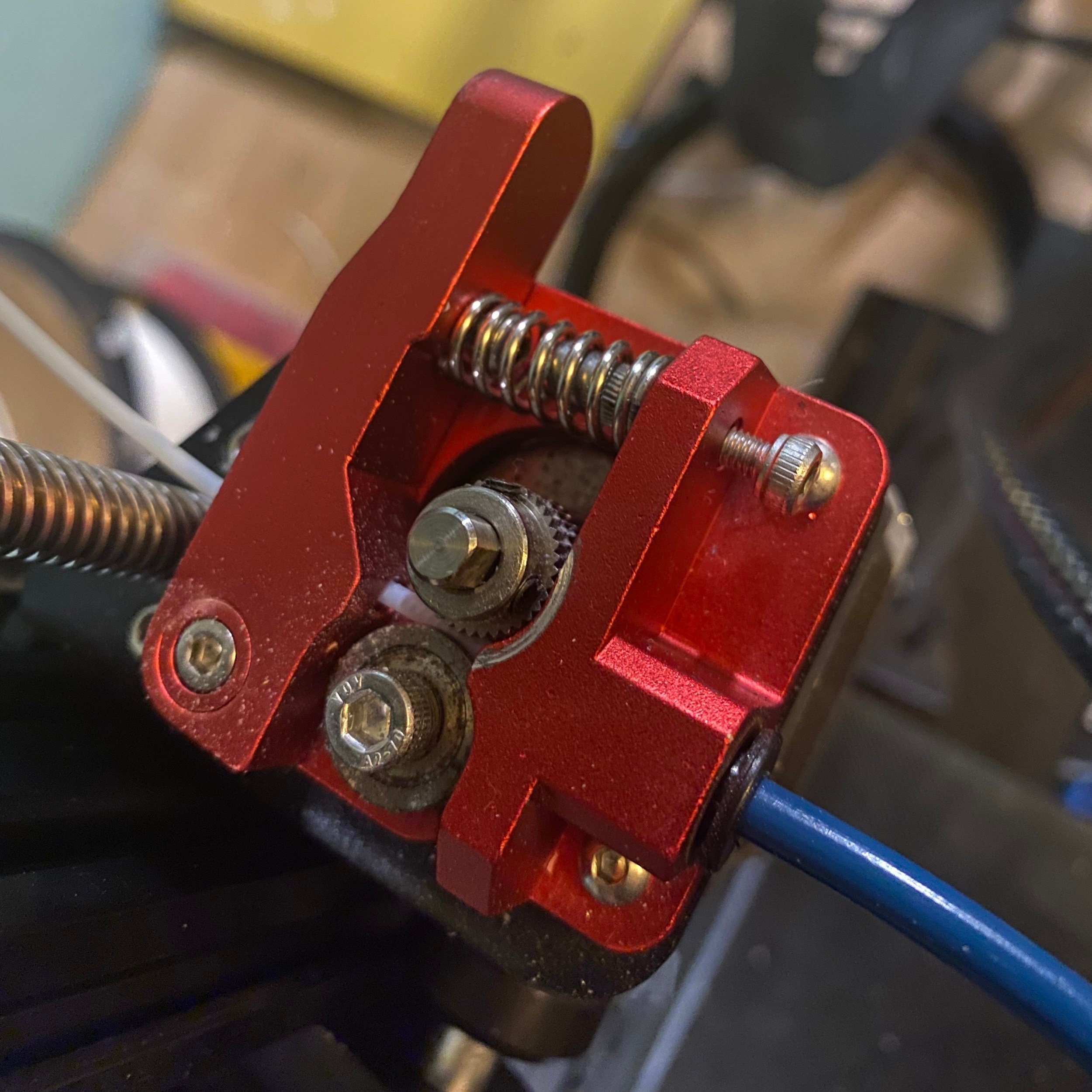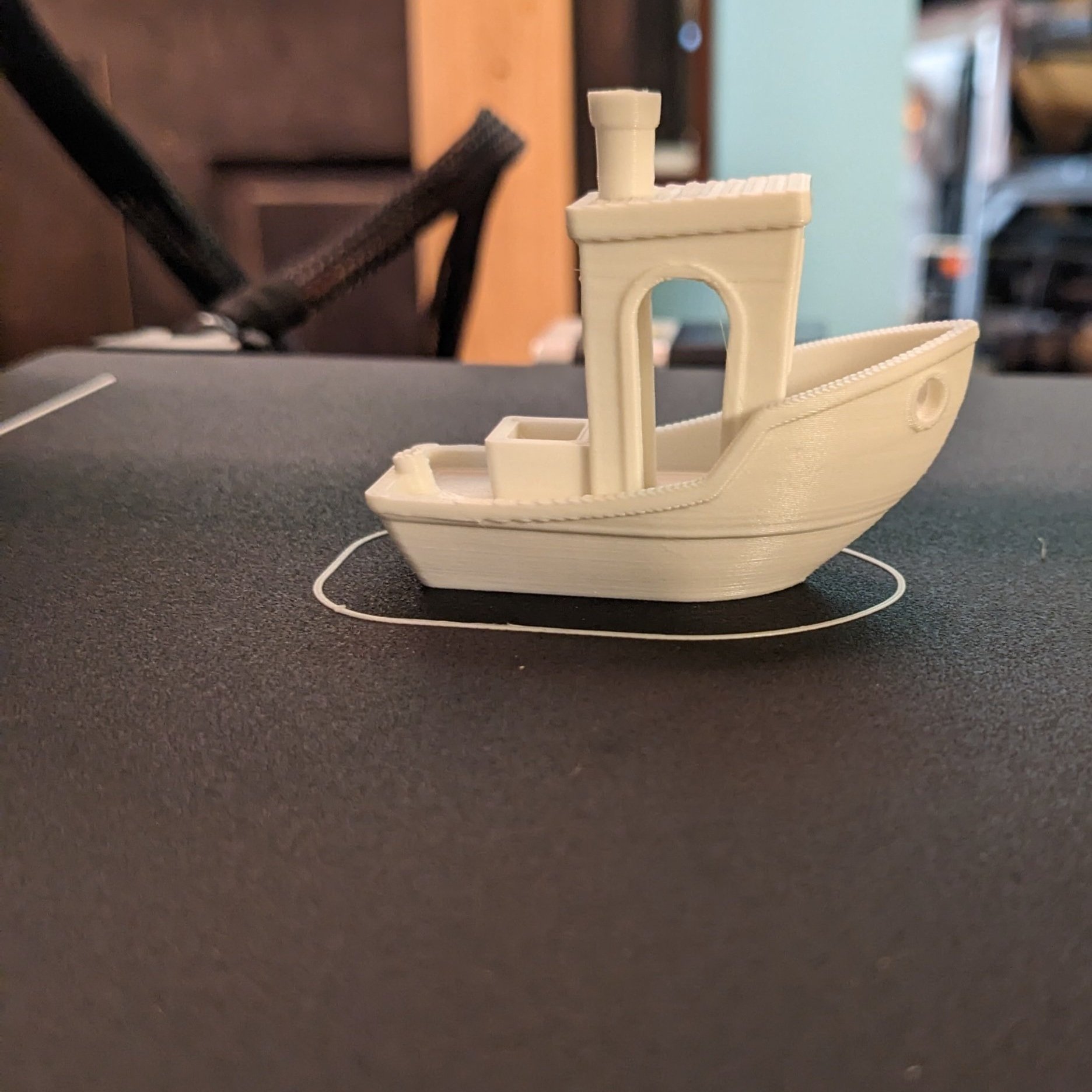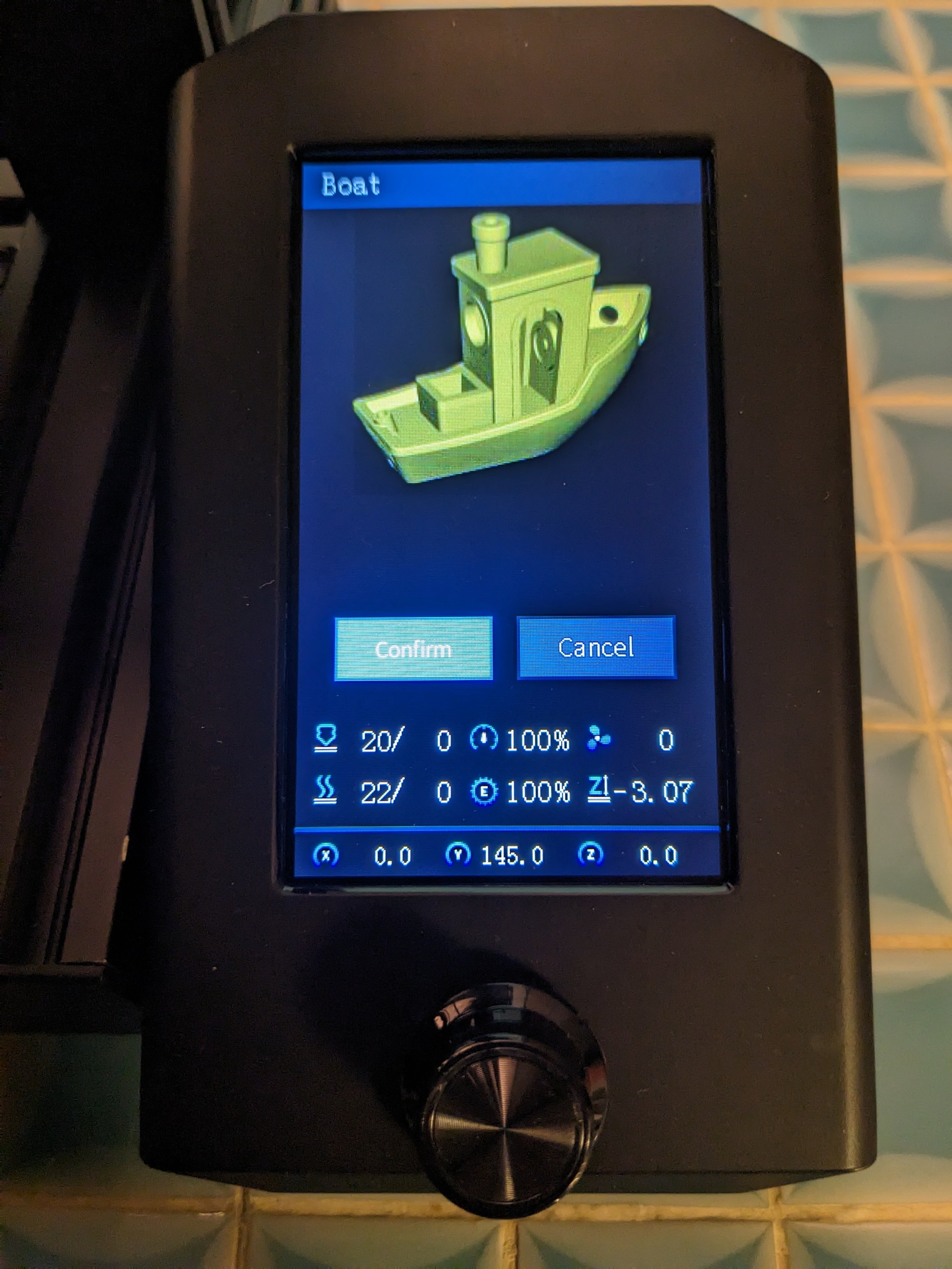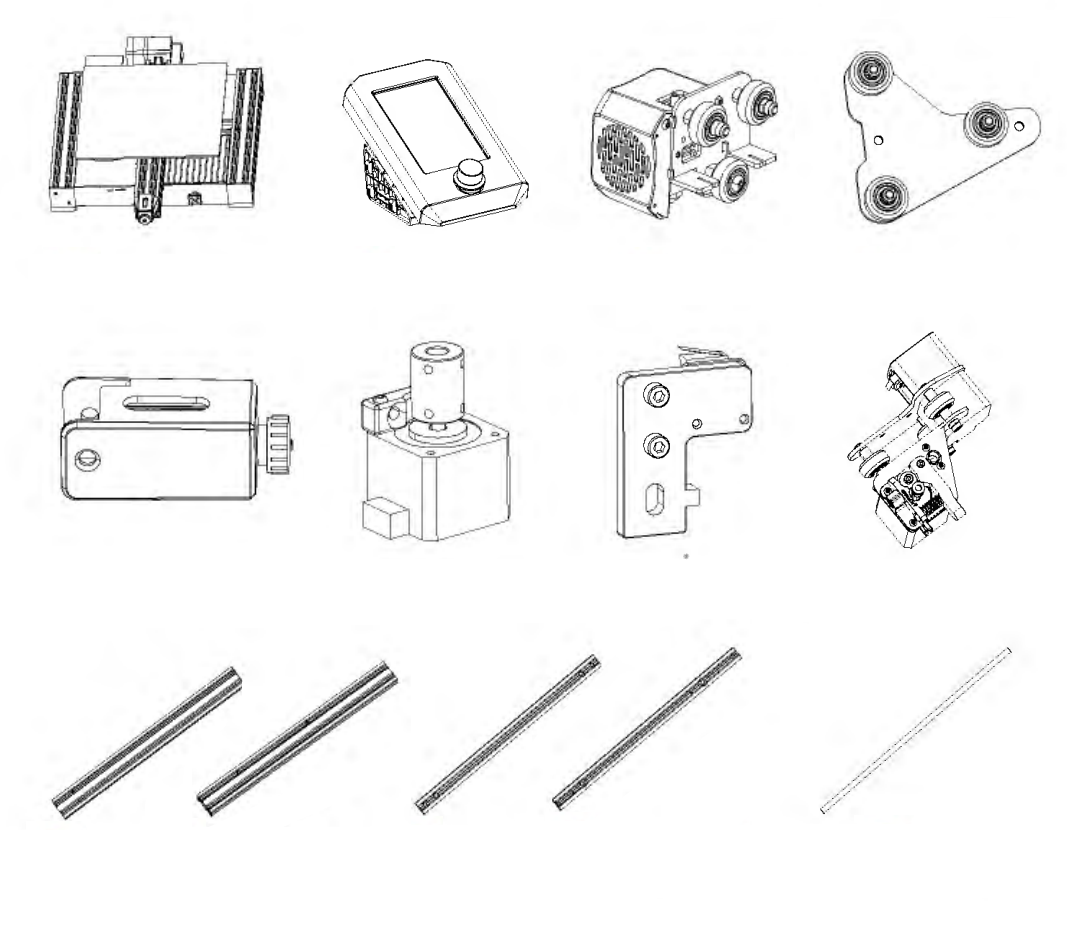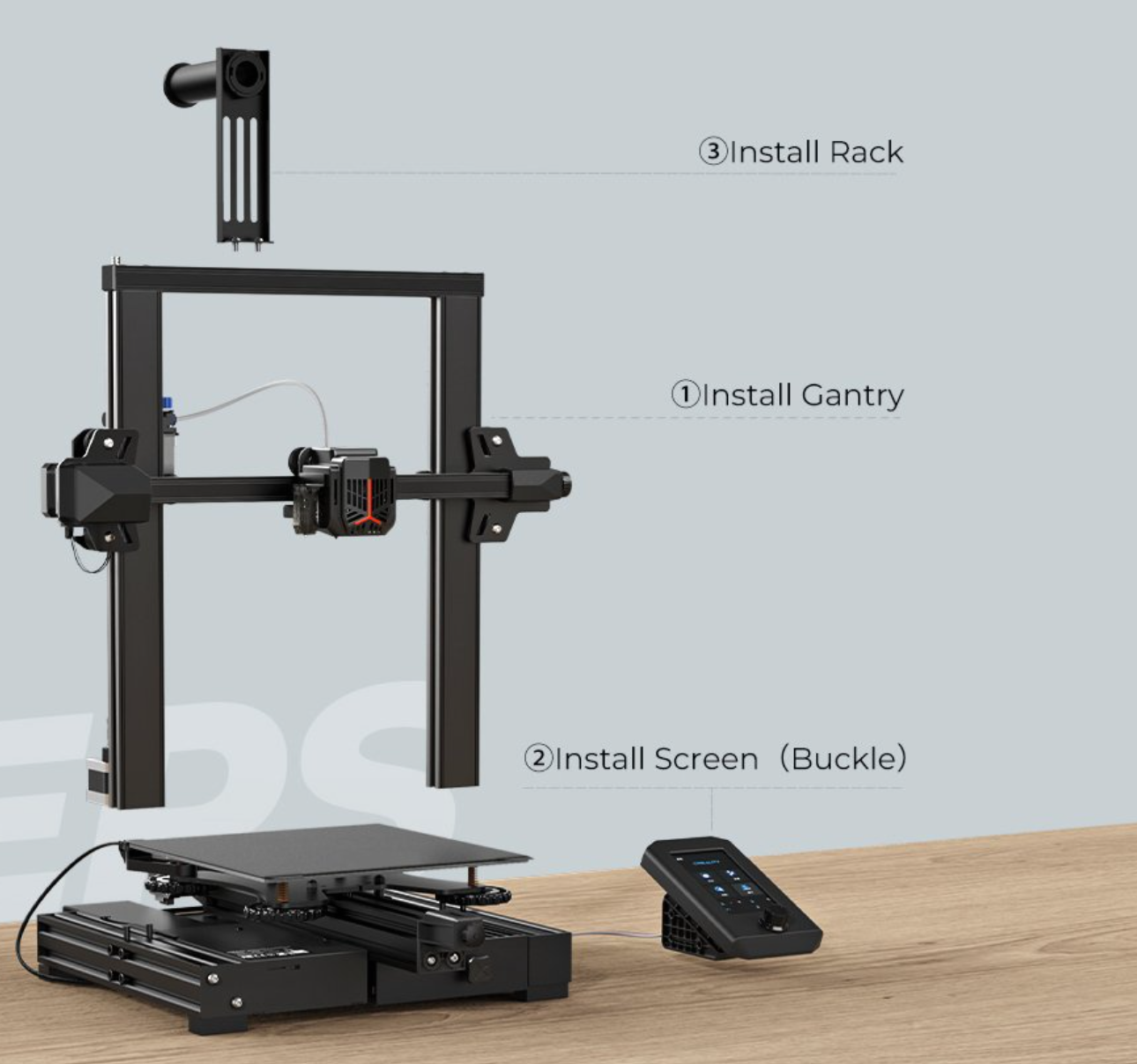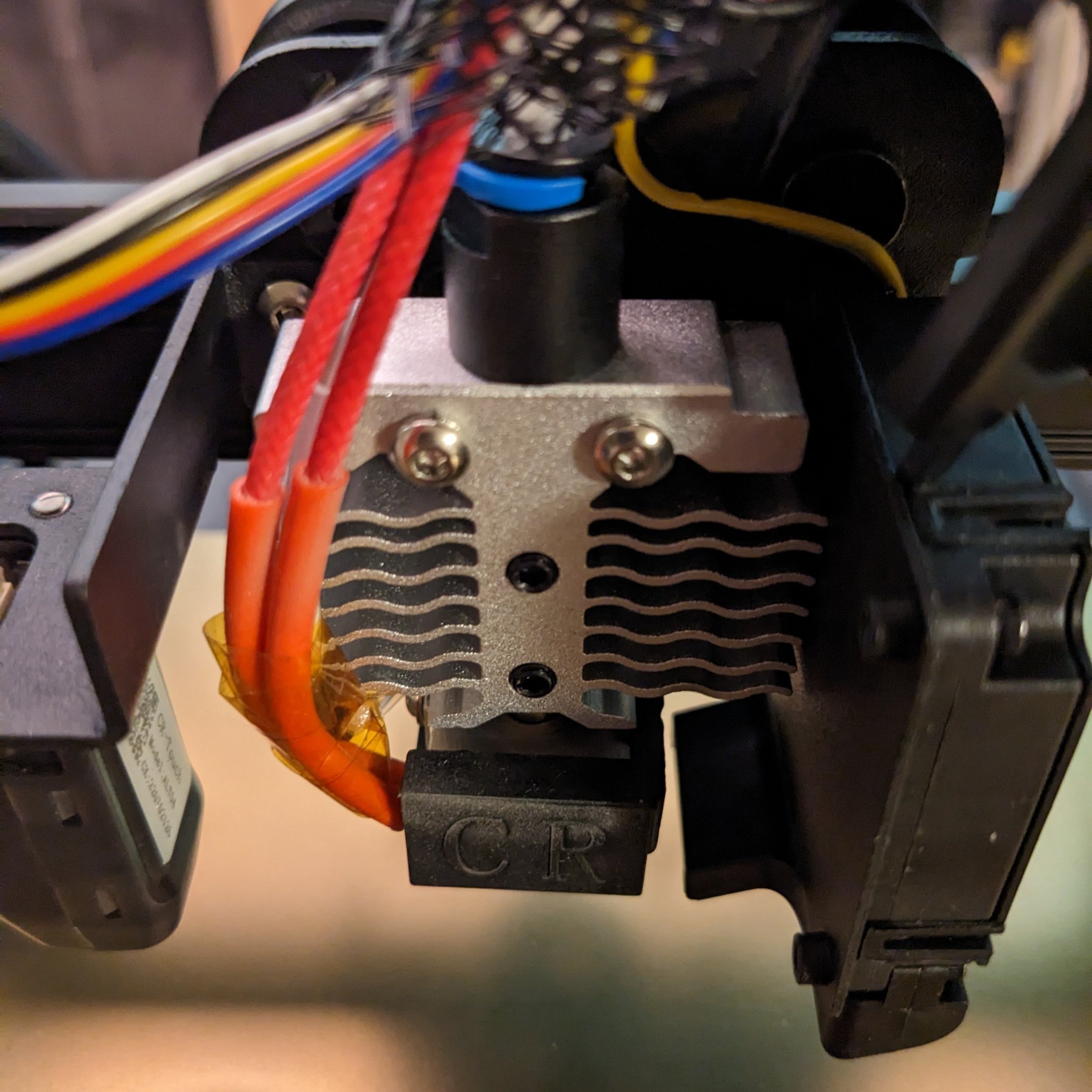Comparing the Ender 3 V2 vs Ender 3 V2 Neo
In this article, we will take a closer look at the Creality Ender 3 V2 Neo by comparing it against its predecessor, the Ender 3 V2, to see what’s new and if it is worth the increased price.
Update: in late 2023, Creality released the Ender 3 V3 SE, which we highly recommend over either the Ender 3 V2 or the V2 Neo. For more detail, see our Ender 3 V3 SE vs Ender 3 V2 Neo comparison.
August 2022 marked another milestone for budget 3D printing enthusiasts and hobbyists with the launch of Ender 3 V2 Neo. Creality released the Ender 3 V2 Neo as part of its latest upgrade to the Ender 3 series. With this latest iteration, the hugely popular Ender 3 series (consisting of the Ender 3, Ender 3 V2, and Ender 3 Max) has a new machine with refreshed looks, slick new features, and performance enhancements.
The original Ender 3 V2 is a popular 3D printer with a large community.
Interestingly, the Ender 3 V2 Neo retains some of the much-acclaimed features from Ender 3 V2 and builds on them with upgrades that improve the 3D printer’s performance, durability, user-friendliness, and print accuracy.
Among the features that Ender 3 V2 Neo retains from its predecessor are the build volume, the single-body chassis, and motion system. Almost everything else has received a makeover. An improved mainboard, auto bed leveling system, all-metal extruder, and a metal build plate are just some of the upgrades in the Ender 3 V2 Neo that we’ll look into today.
We’ll also help you answer the big question: Are these improvements worth the price bump over the Ender 3 V2? Today, we’ll pit the Ender 3 V2 Neo against its predecessor, the Ender 3 V2, to help you decide.
Note: Creality Experts receives a commission for items you purchase from this page, at no additional cost to you. For more information, please see our affiliate link policy.
Vs.
Shared Features
The “Neo” in Creality Ender 3 V2 Neo means “new,” but that doesn’t mean everything about it is new. It inherits many features from its predecessor, the Creality Ender 3 V2.
Build Volume
The Ender 3 V2 Neo (view on Amazon) offers 220 x 220 x 250 mm of printing volume, which is identical to the Ender 3 V2. So you get the same amount of space for creating your 3D models. We like this size for entry level 3D printers because it offers a good balance between printing larger parts and being able to fit comfortably on a desk. If you are looking for something bigger (which can be useful if you are printing functional parts), the Ender 3 Max Neo may be worth considering as a larger and more expensive alternative.
Temperature Capability
The heating systems are also identical, with nozzle temperatures hitting a maximum of 260°C, while the bed reaches a maximum temperature of 100°C. At this temperature, the hot end can easily handle all of the standard 3D printing materials, including PLA, ABS, and PETG.
Mainboard
Creality claims that the Ender 3 V2 Neo has a quieter “32-bit silent mainboard”, but we’ve found that it’s just a rebranding of the one on the Ender 3 V2. The 4.2.2 mainboard on Ender 3 V2 Neo is almost same as the 4.2.7 mainboard on Ender 3 V2- the only difference is a wiring change to work with a different manufacturer’s steppers. There’s no difference in performance between the two.
Chassis/Kinematics
Like the Ender 3 V2, the Creality Ender 3 Neo has a moving bed for the Y axis, while the hot end moves laterally in the X direction.
Creality has made no changes to the Ender 3 V2 Neo’s mechanical arrangement, and it retains the Cartesian-XZ-head with the build plate moving in the Y direction (front to back). Although the Neo ships in a semi-assembled state like the Ender 3 V2, the difference between the two is substantial. The Neo comes in far fewer pieces than its predecessor, which makes it easier to assemble than the Ender 3 V2. The assembly time is reduced from about an hour to under 15 minutes, which is a relief for beginners and a major convenience for more experienced users.
Both printers have many modern features that are nice to have on any 3D printer.
Power recovery - Allows you to resume a print if the printer shuts off due to a power failure.
Silent Stepper Drivers - Older 3D printers such as the Creality CR-10 produce a song-like sound when printing due to the frequencies of the motors moving. Newer electronics prevent this issue, making the printer substantially quieter. The only sound you will hear are the fans, which is much easier to ignore.
Notably, neither printer has a Filament Runout Sensor. Printers with this feature will pause and beep to let you know if you run out of filament, allowing you to reload and resume the print. Unfortunately, we’ve noticed that the bed heater also turns off on these machine. If you are not able to restart the print within about 10 minutes, the part will often detach from the bed, preventing a successful recovery. So although neither printer has this feature, we don’t think it’s a big loss.
Next, we’ll look at the differences between these printers.
Differences in the Creality Ender 3 V2 Neo
Full Metal Extruder
While both printers use the same Bowden-style extruder mounted on the left side of the gantry, the Ender 3 V2 Neo is equipped with a metal extruder, which provides more consistent extrusion force and reduces the risk of under-extrusion. The plastic extruders are very prone to breaking, and we always recommended upgrading to the metal one, so this is nice to see as a standard feature on the V2 Neo.
The Ender 3 V2 extruder is plastic, and is prone to breaking.
The Ender 3 V2 Neo uses an upgraded metal extruder which is much more reliable.
Bed Material
The Ender 3 V2 Neo uses a PC coated bed, which has very good adhesion, but part removal can be difficult
The Ender 3 V2 Neo borrows its powder-coated (PC) flexible magnetic spring steel build plate from its more premium cousin, the Creality Ender 3 S1. The PC spring steel plate offers excellent adhesion, requires little to no cleaning (even after dozens of prints), and is remarkably user-friendly. Owing to its rigidity, the steel plate makes it a hassle-free experience to remove it from the printer and get the prints off of it. All you need to do is flex the plate and off comes the print.
While PC spring steel plate has very good adhesion, it can be hard to remove prints even with the ability to bend the build plate. The carborundum plate on the Ender 3 V2 is a better overall build surface in our experience, since prints are much easier to remove once the bed cools without any need for removing the bed surface. We’ve also found that it’s far easier to damage the PC surface of the steel build plate if the first layer leveling is too low. We’ve analyzed these two varieties of build plates in more detail in our bed material guide.
We feel that the carborundum glass plate is a superior all around bed surface than the new PC coated build surface. However, the use of a magnetic bed and bed leveling makes it very easy to use other bed surfaces like PEI, and makes it easy to switch surfaces depending on what you are printing - PC is a great choice for parts with small, complex first layers where great adhesion is key, while PEI is better for larger parts.
UI Improvements
The Ender 3 V2 Neo uses the same LCD, but has a convenient new preview feature.
The Neo retains the 4.3 inch color screen from its predecessor. However, you’ll find a new Preview feature that lets you preview the model you are 3D printing. It allows you to monitor the progress as the machine prints your design. Preview doesn’t sound like that big of a deal, until that one time you find yourself forgetting what you’re printing or losing track of which file you wanted to print. We think this is a cool feature, but not a deal maker or breaker.
Automatic Bed Leveling
Perhaps the biggest game changer for the Ender 3 V2 Neo is the CR-Touch auto-leveling system. It uses a touch probe to automatically scan 16 separate points on the bed before each print to discover and adjust for any unevenness on the platform. This ensures ensures level accuracy and a consistently high-quality first layer. The automatic bed leveling dramatically improves the 3D printing experience, as it eliminates the hassle of manual levelling altogether.
Usability and Ease of Assembly
Besides the build plate, gantry design is another slick feature the Creality Ender 3 V2 Neo has borrowed from the Ender 3 S1, albeit with its own twists. Firstly, the Neo features extrusion covers and angular covers on the Z passive blocks. Secondly, it features only one set of Z-axis motor and leadscrew, similar to Ender 3 V2. In our experience, having a single Z-axis motor does not have a noticeable effect on print quality.
The Ender 3 V2 Neo also features a 3-step assembly, which is a huge relief for beginners who aren’t well-versed with 3D printers and fear getting things wrong.
The Ender 3 V2 is shipped in many separate pieces, and takes about an hour to assemble.
The Ender 3 V2 Neo arrives almost entirely assembled and requires just a few steps to get up and running.
Reliability
As you already know, the all-metal design of the Bowden extruder (including a metal lever arm) significantly improves its durability in comparison to plastic ones, as well as improving the grip on the filament. Additionally, the auto-leveling system makes it easy and convenient to get accurate 3D prints from the very first layer.
The Ender 3 V2 uses a smaller heat sink with close fins that limit airflow
The new heat sink design on the Ender 3 V2 Neo provides superior cooling to the cold side of the hot end, which reduces the chance of a jam.
The Ender 3 V2 Neo (and all of the Neo series) introduces a redesigned heat sink on the hot end, which provides more surface area and space between the fins to make sure the cold side of the hot end stays cool. This is important to make sure that filament doesn’t start to melt sooner than intended, which can cause jamming. While jams can be cleared pretty easily, they are inconvenient and will cause the print to fail, so this is a welcome addition.
Another small improvement is the design of the coupler which holds the PTFE tube - the Ender 3 V2 Neo uses a new design that no longer relies on small metal teeth to hold the tube, making it less prone to failing over time. We also found that it holds the tube very firmly as long as the blue clip is present, which will help prevent jamming due to a gap forming between the PTFE and the top of the nozzle.
Both printers use a Meanwell PSU which is a dependable power supply for fast heating and long hours of 3D printing. We have seen this first hand since none of our printers with these PSUs have needed replacements, while other machines with lower quality power supplies have died on us.
Verdict
In several ways, the Creality Ender 3 V2 Neo marks a major improvement over its predecessor, the Creality Ender 3 V2. It’s more compact, user-friendly, accurate, reliable, and just provides more value in a smaller box. Auto bed leveling, a full-metal extruder, a refreshed UI with previews, an adhesive and bendable metal build plate, and a pre-installed design – they all add up to make a huge difference in performance and user experience for users. These changes definitely push the Ender 3 series to the next level, at least within its price range.
So, in our opinion, the Ender 3 V2 Neo is a great entry-level 3D printer for students and hobbyists to consider. Since it costs roughly $50 more than Ender 3 V2, we believe the improvements outweigh the price difference. This is especially true if auto bed levelling is an important feature to you, since this upgrade alone will cost nearly $50.
That doesn’t mean the Creality Ender 3 V2 is without its benefits. If you’re short on cash, then it could be a good choice. However, at its price range, we recommend you consider the Creality Ender 3 Neo [Amazon link], the base model in the Neo series. It offers better features and performance than the Ender 3 V2 for a similar price.
Although Creality has made no announcements yet, we think that they are likely to stop producing the Ender 3 V2 now that a newer model is available. When this has happened in the past, such as with the CR-10 S4 and S5, we expect to see a price drop on the Ender 3 V2. If you can pick one up for a lower price, that could be a great deal to get into 3D printing at a low price with a machine that we still feel is excellent.
At the bottom of this page, we’ve recapped the comparison to help you review the similarities and differences. You can also view the printers directly on Amazon here:
If you’d like to compare other printers, take a look at our 3D Printer Comparison Tool. This tool lets you view multiple 3D printers side by side to easily compare features.
